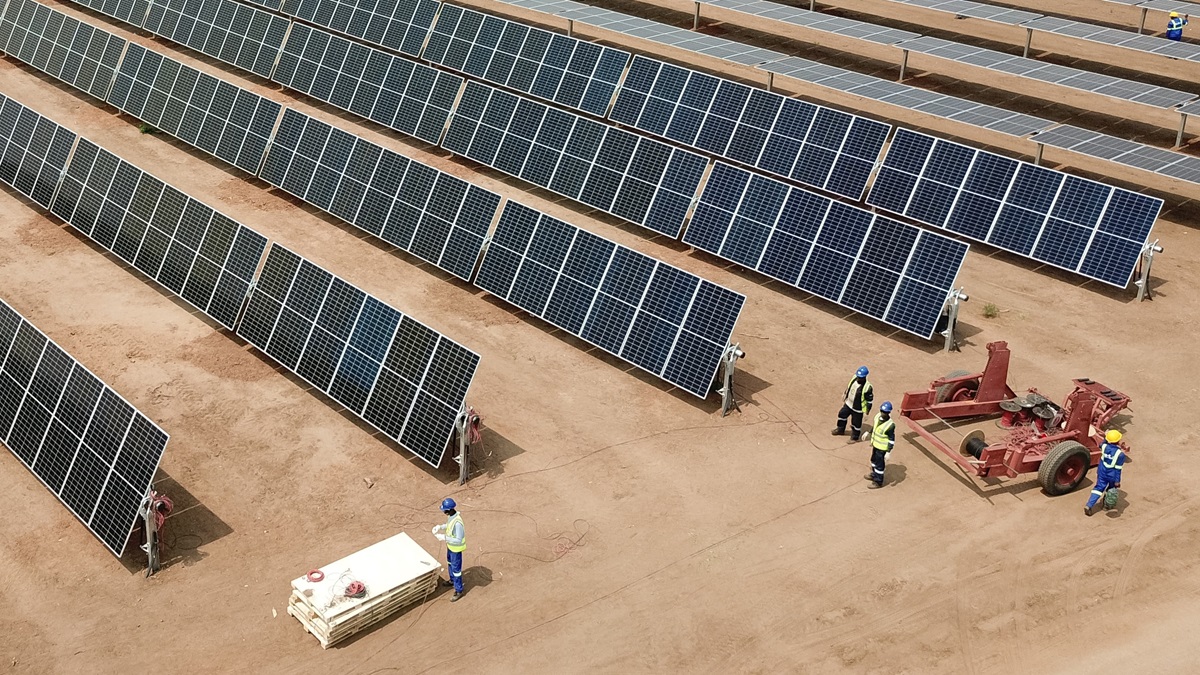By connecting economic growth with climate action, carbon markets can offer a pathway to mobilize funds for sustainable development in the world’s most vulnerable economies.
© Shutterstock/Tukio | A solar power plant under construction in Malawi.
Carbon markets have provided limited funding for sustainable development in least developed countries, with only modest positive impacts so far.
Stronger domestic laws, regulations and monitoring could help these economies benefit more from carbon markets and support sustainable development.
The Least Developed Countries Report 2024, launched by UN Trade and Development (UNCTAD) on 4 November, highlights that least developed countries (LDCs) can use carbon market projects to support their development, if managed well. This would also enable these countries to contribute to global net-zero goals and climate action.
What are carbon markets?
Carbon markets are platforms where carbon credits – permits to offset a specific amount of carbon emissions – are bought and sold. By participating in these markets, selling countries can earn revenue and contribute to climate action by offsetting the emissions of buyers.
Early movers, limited influence
LDCs were among the first to join carbon markets but currently have limited influence due to the small size of their economies and challenges in infrastructure, technology and institutional capacity.
Investing in areas like tracking and reporting require upfront investment but could greatly increase their participation and benefits.
Highly concentrated market activity
LDCs face unique challenges in accessing global carbon markets due to their smaller economies and difficulties in attracting foreign investment. Geographic concentration is a major issue: just six LDCs – Bangladesh, Cambodia, the Democratic Republic of the Congo, Malawi, Uganda and Zambia – account for over 75% of all carbon credits issued in voluntary markets and 80% of credits under the Kyoto Protocol’s Clean Development Mechanism (CDM).
Although LDCs make up only 1.5% of global CDM projects, this concentration highlights a significant opportunity to broaden participation and create more inclusive carbon markets that benefit all LDCs.
Financing gaps
While LDCs participate in carbon markets, the financial returns are modest compared to larger sources of funding like development aid, foreign direct investment and remittances.
In 2023, the market value of carbon credits from LDCs was about $403 million, which is only about 1% of total bilateral development aid.
With LDCs needing $1 trillion annually to achieve the Sustainable Development Goals by 2030, carbon markets alone cannot close this funding gap but can provide additional financial support at best.
Case studies show that the benefits of participating in carbon markets – such as technology transfer, education and community development – are uncertain in LDCs.
Opportunities in forestry, agriculture and renewable energy
LDCs have significant untapped potential for climate action in sectors like forestry and agriculture, which offer promising opportunities for generating carbon credits. This potential could equal 70% of the CO2 emissions from the global aviation industry in 2019, or about 2% of total global emissions. However, realizing this potential depends on having viable carbon prices and accessible projects.
To make investments in land-based projects worthwhile, a carbon price of $100 per ton is needed. Currently, LDCs are only utilizing about 2% of this potential. Without significant increases in carbon prices, approximately 97% of their mitigation potential could go untapped by 2050. Therefore, a higher carbon price is essential for unlocking land-based mitigation projects.
Additionally, LDCs have substantial opportunities for expanding renewable energy to meet local electricity needs and improve energy access. Carbon markets can help raise part of the necessary funds, providing a promising pathway to harness renewable resources, promote sustainable growth and modernize their economies.
Path forward
UNCTAD recommends that LDCs and their development partners focus on three key priorities to enhance the benefits of carbon markets for least developed countries:
- Strengthen domestic frameworks: Build regulatory capacity, implement effective monitoring and reporting systems and ensure that local communities benefit from carbon projects.
- Expand international partnerships: Create regional institutions to lower costs and improve market positioning, leverage South-South cooperation and advocate for supportive frameworks in global climate agreements.
- Prioritize capacity-building: Ensure development partners provide resources to help LDCs integrate carbon market policies with broader economic transformation goals. Additionally, it’s necessary to distinguish carbon finance from climate financing to enhance accountability.
UNCTAD’s report concludes that carbon markets can contribute to LDC development. By addressing existing barriers and implementing targeted reforms, LDCs can unlock their significant climate potential, create financial opportunities and upgrade their economies, while contributing to global climate action.

